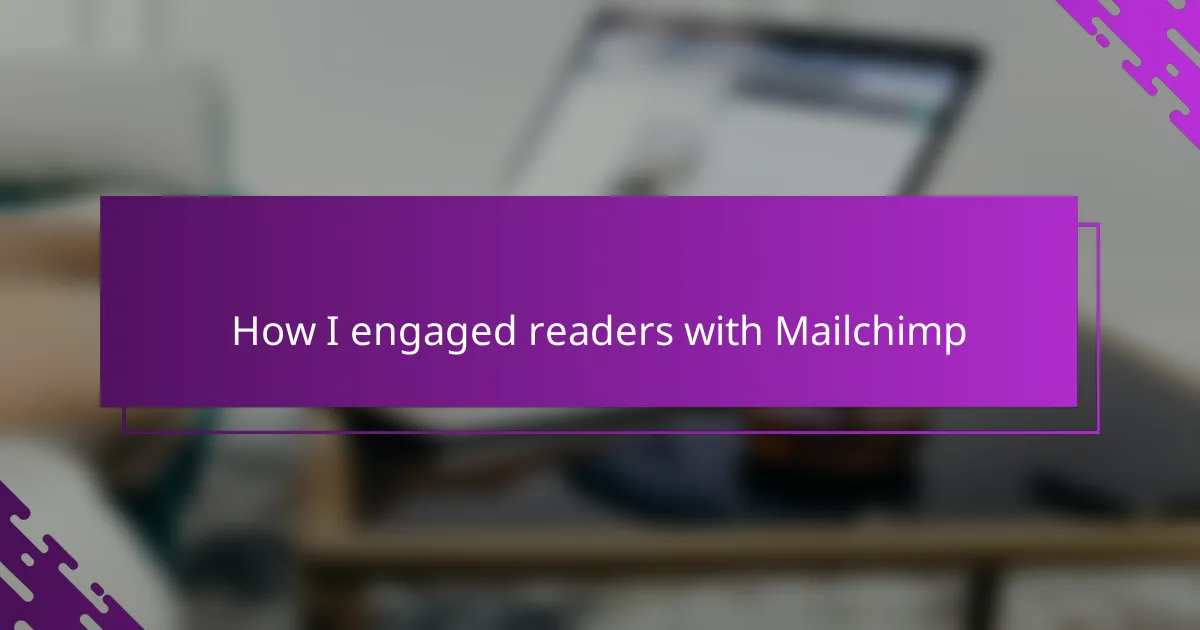Key takeaways
- Mailchimp simplifies email marketing by offering automation, detailed analytics, and easy setup, enhancing engagement and audience insights.
- Building an engaging email list relies on quality over quantity, with personalized content and targeted segments leading to better interactions.
- Effective email campaigns start with clear goals, balance design simplicity with compelling content, and require careful timing for better audience reach.
- Automation in Mailchimp enhances reader connection and engagement, allowing for timely, personalized communication without overwhelming subscribers.
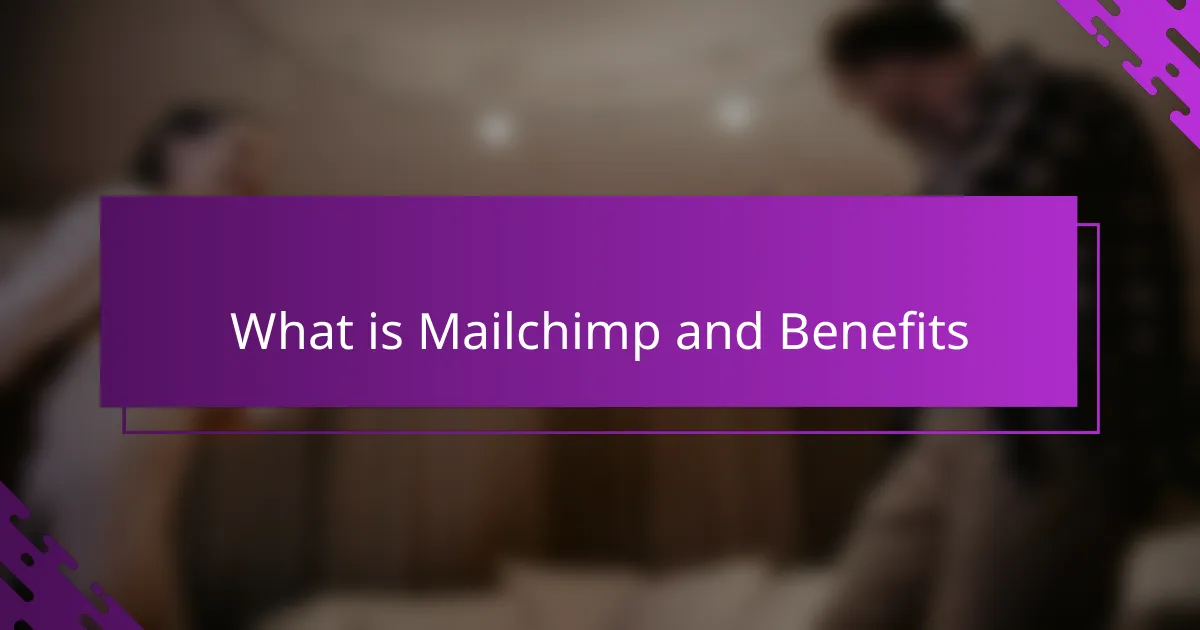
What is Mailchimp and Benefits
Mailchimp is an all-in-one marketing platform that makes staying connected with your readers a breeze. When I first used it, I was amazed at how easy it was to create beautiful email campaigns without needing any technical skills. Have you ever struggled to keep your audience engaged? Mailchimp takes that worry away by handling the tough stuff for you.
One of the biggest benefits I found is Mailchimp’s automation features. Setting up welcome emails or regular newsletters that send automatically meant I could focus more on writing and less on the tedious follow-up. It felt like having a personal assistant who never misses a beat.
Plus, the detailed analytics gave me real insight into what content my readers loved and what they ignored. Seeing those reports sparked new ideas and helped me tailor my blog to fit my audience’s interests better. Isn’t that the kind of feedback every blogger wishes for?
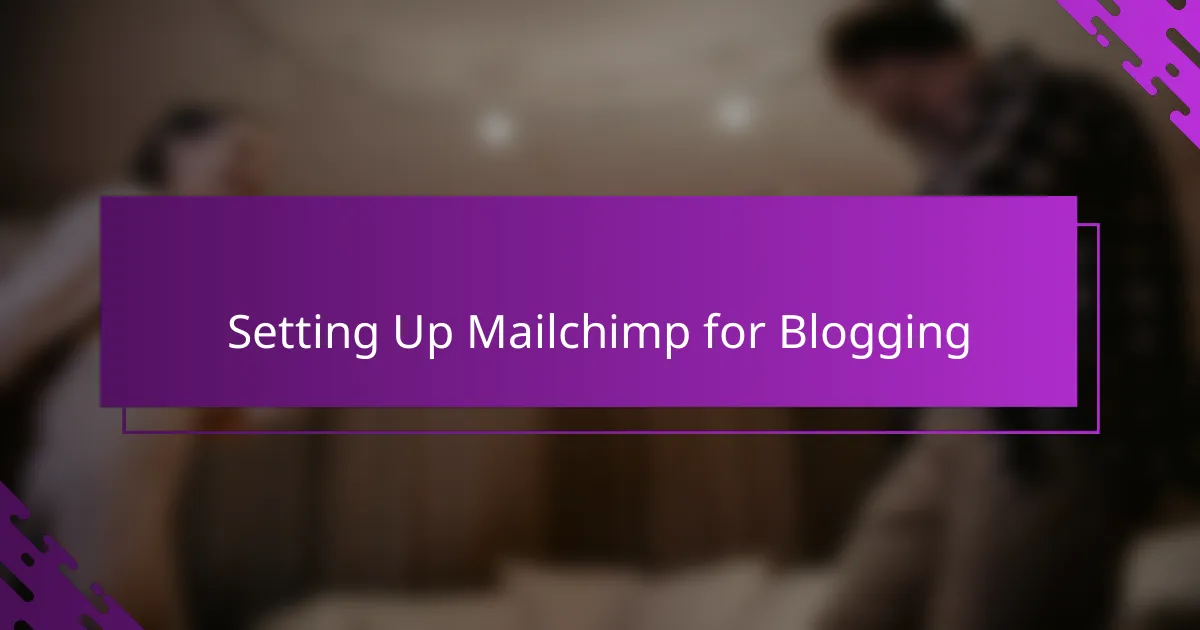
Setting Up Mailchimp for Blogging
Getting Mailchimp ready for my blog was surprisingly simple. The first step was setting up my audience list, which felt like organizing my own little community. I remembered wondering if people would actually sign up, but seeing that first notification pop up was genuinely thrilling.
Connecting Mailchimp to my blog took just a few clicks, thanks to clear instructions and helpful prompts. Have you ever felt overwhelmed by tech setups? I did, but this process was straightforward enough to keep my confidence up—and before I knew it, I was ready to send out my first campaign.
I also customized my signup forms to match my blog’s personality, which made a huge difference. Readers appreciated the personal touch, and I noticed more signups just from that small bit of effort. It made me realize how much these little details can impact engagement.
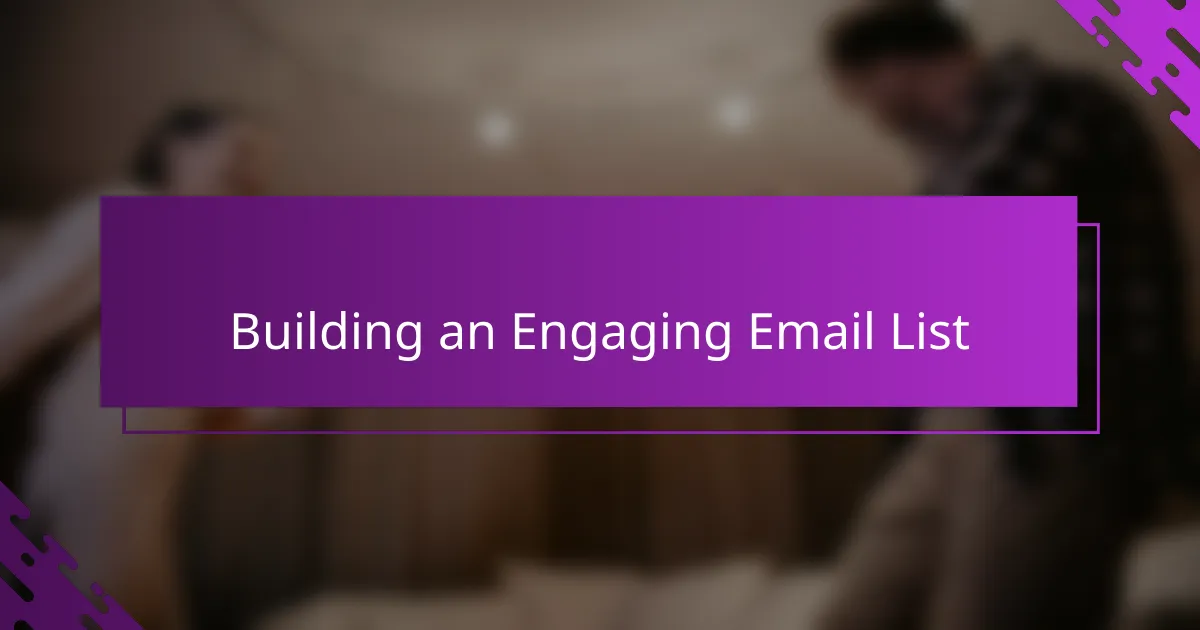
Building an Engaging Email List
Building an engaging email list isn’t just about collecting addresses; it’s about nurturing a community that genuinely wants to hear from you. I quickly learned that quality beats quantity—having a smaller, active list is far more rewarding than thousands of silent subscribers. Have you ever sent a newsletter that felt like it disappeared into a void? That’s exactly what I wanted to avoid.
One trick that worked well for me was creating targeted segments within my list based on readers’ interests and behaviors. It felt empowering to speak directly to people’s preferences, making each email feel like a personalized conversation rather than a generic broadcast. Seeing higher open rates and replies proved that taking the time to understand my audience made all the difference.
Another game-changer was consistently offering valuable content right from the signup—think exclusive tips or sneak peeks that readers couldn’t get anywhere else. I noticed those incentives made people more eager to subscribe and, more importantly, stay engaged. Have you tried rewarding loyalty this way? It’s a small gesture that builds trust and keeps your list vibrant.
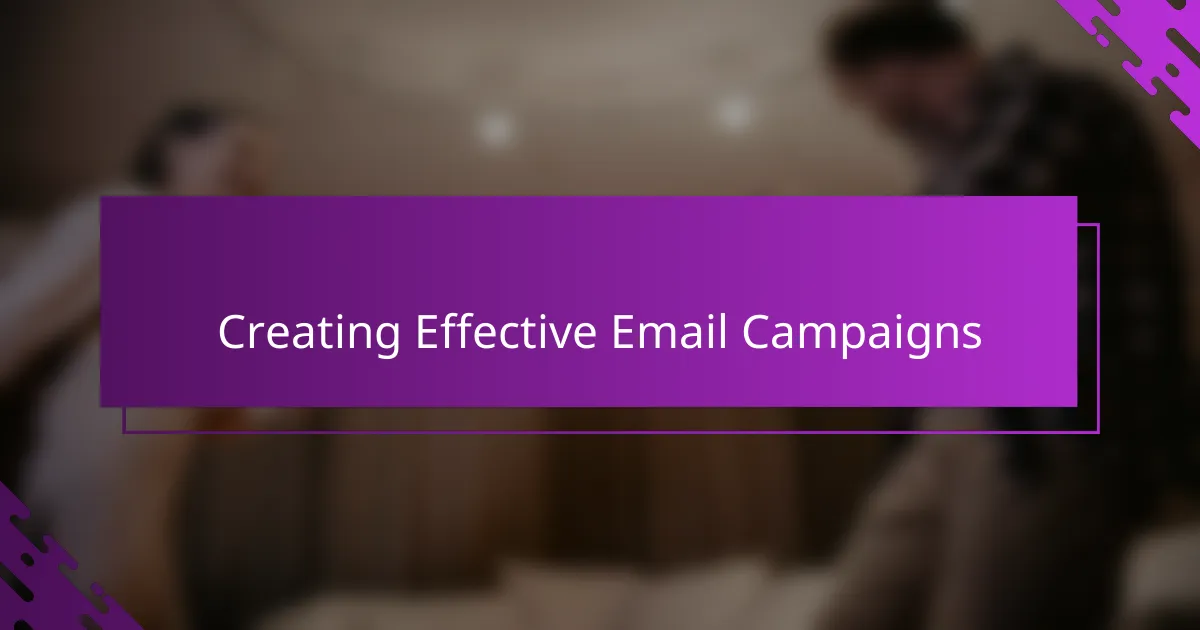
Creating Effective Email Campaigns
Creating effective email campaigns with Mailchimp felt like unlocking a new level of connection with my readers. I discovered that starting with a clear goal—whether it was sharing a new blog post or announcing an exclusive offer—helped me focus my message and keep it relevant. Have you ever opened an email that immediately grabbed your attention? That’s exactly what I aimed for by crafting concise, compelling subject lines that sparked curiosity without feeling like clickbait.
I also learned the importance of balancing eye-catching design with simplicity. Mailchimp’s drag-and-drop editor made it easy to play with layouts, but I kept reminding myself that too many fonts or colors could overwhelm readers. Instead, I chose images and snippets that complemented my writing and reflected my blog’s personality. Did I notice a difference? Absolutely—engagement rates climbed as my emails felt more inviting and authentic.
Timing was another piece of the puzzle I had to figure out. Sending emails too early or too late risked getting lost in crowded inboxes. After some trial and error, I found that mid-morning midweek campaigns worked best for my audience. It’s funny how just tweaking the schedule made such a big impact. Have you tried testing send times? I encourage you to experiment—it’s a simple step that can transform your campaigns from overlooked to anticipated.

Using Automation to Enhance Engagement
Using automation in Mailchimp completely changed how I connect with my readers. Instead of manually sending every email, I set up welcome sequences that introduced new subscribers to my blog’s voice and values without any extra effort from me. Isn’t it amazing to think that your audience gets that personal touch exactly when they’re most interested, even while you’re focused on creating new content?
What surprised me most was how automation kept the conversation going consistently. I scheduled regular reminders and follow-ups that nudged readers gently, which helped reduce the feeling of being “spammy” and more like a thoughtful friend checking in. Have you ever worried about bothering your subscribers too much? This balance was a game-changer for maintaining engagement without overwhelming anyone.
Beyond saving time, automated workflows gave me space to experiment with different messages and offers tailored to where each reader was on their journey. By segmenting and automating, I could send relevant content that felt timely and helpful, not generic blasts. Seeing those steady clicks and replies coming in was proof that automation doesn’t replace connection—it enhances it.
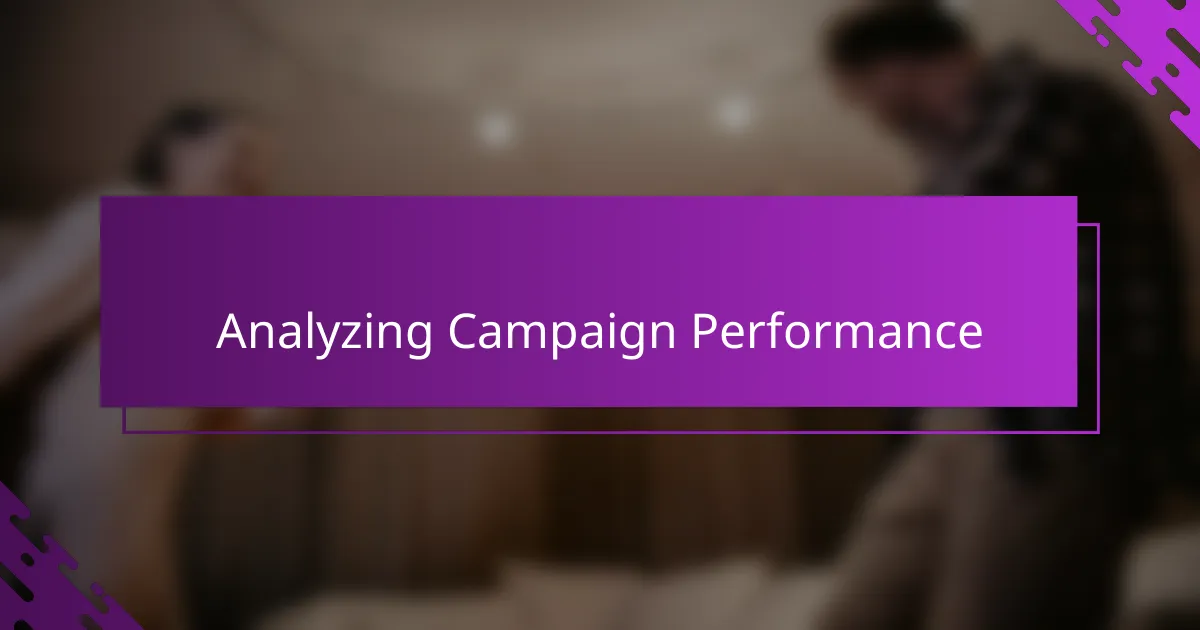
Analyzing Campaign Performance
Digging into Mailchimp’s campaign reports was like opening a treasure chest of insights. I remember the first time I saw which emails got opened the most—I felt like I’d uncovered a secret map to my readers’ hearts. Have you ever wondered why some subject lines or links get clicked while others don’t? Those details helped me refine my approach in a way that felt both strategic and intuitive.
It wasn’t just about open rates either; tracking click-throughs showed me which blog posts or offers sparked genuine interest. Sometimes, a campaign that looked great on the surface underperformed because the content didn’t resonate. That realization made me rethink how I framed my calls to action, turning passive readers into active participants.
What really changed the game was comparing performance over time. Watching trends emerge and spotting what worked consistently gave me confidence to double down on what my audience craved. Have you ever felt stuck guessing if your emails made a difference? With Mailchimp’s analytics, those guesswork days faded away—and that clarity made all the effort feel worthwhile.
